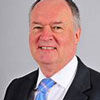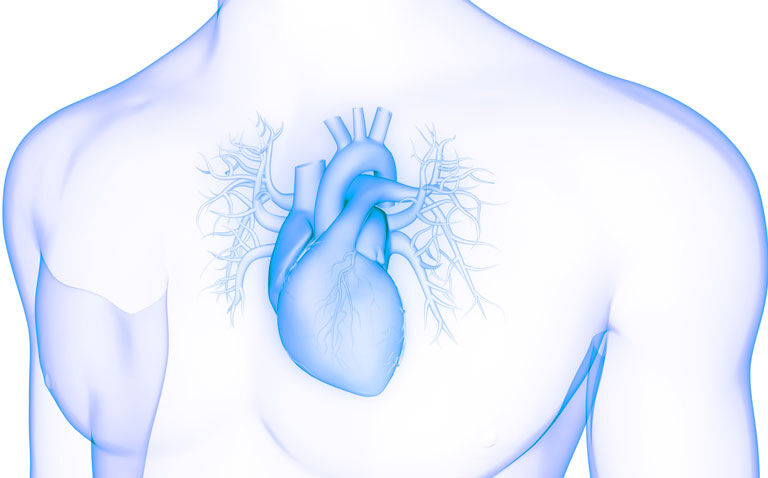
Dr Andrew Coats describes himself as a career cardiologist specialising in heart failure. He is CEO and scientific director of the Heart Research Institute in Sydney, Australia.

Spending around two-thirds of his time in Australia and the remainder in the UK, Dr Coats has had three separate careers. He left medicine to pursue several management and fund-raising roles, took up an academic position and finally moved into commercialisation – currently holding many patents and three start-up companies focusing on devices related to heart failure.
He spoke to Hospital Healthcare Europe about his career and work in cardiology.
Tell us about the work done by the Heart Research Institute
The Institute is dedicated to heart disease and is a basic science research institute looking at novel treatments. In addition to running the Institute, I still find time to see patients, where my focus is on heart failure. The centre is involved with the delivery of a wide range of cardiovascular treatments and interventions, including transplantations.
What do you think are the main challenges in setting up a clinical centre?
The challenge in healthcare is getting funding for ever more that you can do. Running a clinical service in the NHS, as I did in the early 2000s, brings its own challenges, especially managing performance, but having an MBA management qualification helps a lot. While most managers look for ways to increase staff performance, in the NHS setting I had to manage performance differently. Given a fixed annual budget for the services we could provide, my role was to prevent surgeons and cardiologists from undertaking too much work and spending the fixed annual budget too quickly. But managing a service is difficult with the overarching challenge being to make it all work under cost pressures, disease pressures, surviving the Covid-19 era, dealing with political diktats and doing it all affordably, despite the demand from an ageing population and expectations increasing.
Are there any professional achievements that particularly stand out for you?
While there are many clinical and scientific achievements within the organisation, the people are both our best weapon and our worst enemy. Consequently, it is fundamental to achieve a sense of team spirit, effective leadership and communication – you can do 10 times more if you align people and if they’re working together. You can have people who are working furiously for what they perceive as the important pressures and what they’re trying to achieve, but a lot of that effort is wasted if they’re not co-ordinated. The biggest challenges and the greatest successes are achieving a joined-up sense of working together.
It’s not so much the written strategy for an organisation that is ultimately important but the process of writing one because you get people to talk to each other and understand each other’s perspective. This creates a shared understanding of what they are trying to achieve together and not just their piece of the puzzle. This shared understanding is crucial to the success of a service, largely because it allows clinicians, whose primary focus is patient care, to appreciate the wider perspective of the service as a whole.
Does the Institute offer clinician training?
The Institute has formalised and written curricula, which are accredited, for young doctors wishing to specialise in cardiology. These doctors are allocated to hospitals with dedicated trainers and educators to allow them the necessary time to gain experience and become independent consultants a few years later. Over the last 10 to 15 years, there has been a greater and separate accreditation for their ability to perform certain complex or high-risk procedures. This requires the clinician to demonstrate capability, audit their practice and do a minimum number of procedures every year to maintain their accreditation.
Tell us about the clinical research you’re involved in for heart failure
Today, I’m a clinical researcher who evaluates patients rather than undertaking laboratory-based work. In other words, assessing patients’ responses to treatment or the impact of novel devices and involvement with clinical trials. I’ve been involved in many studies over the years and some have led to changes in clinical practice. For instance, I was the first to demonstrate the huge benefits of exercise among those with end-stage heart failure awaiting a transplant, dispelling the perceived wisdom at the time that such patients should not exercise. While not the only group, my team and I were able to show that beta-blockers – which were thought to worsen heart failure and should therefore be avoided – could in fact improve survival if started slowly. More recently, I’ve worked with others to discover that the SGLT-2 inhibitors designed for use in type 2 diabetes are effective in heart failure.
While there have been many benefits associated with medical treatments, devices are very much a growth area. This includes several device therapies that, for instance, can cause electrical stimulation and blockade of the reflex control system, as well as those pacing the heart in a more sophisticated way. Or even devices to control blood flow across the chambers of the heart. Such devices, together with stem cell and gene therapy and monoclonal antibodies, mean the developments in heart failure occur from a variety of different sources.
Looking forward, what do you feel are the key remaining challenges in heart failure and cardiovascular disease?
Perhaps one of the biggest challenges in cardiovascular disease is the need for a paradigm shift in the treatment approach. There are currently two diametrically opposed approaches: splitters and lumpers. The splitters’ philosophy is predicated on the belief that because every patient is unique, treatment should be personalised. In contrast, lumpers believe it is more productive to focus on a particular disease and perform trials to see what works. However, while the lumper approach identifies benefits for patients with a particular condition, these interventions are not always 100% effective.
In heart failure, for example, there are actually two types: a low and a high ejection fraction. Drug treatments mainly work in low ejection fraction. In fact, when drug therapy was used in those with a high ejection fraction, the treatment was ineffective simply because there are several possible causes of this type of heart failure. In trying to better understand which patients are likely to respond to a treatment intervention, cardiologists have borrowed the strategy of precision medicine used by oncologists.
It therefore becomes possible to define patients into much smaller subtypes of disease and then optimise the treatments for this subgroup. While patient identification may initially be more expensive, the overall cost to the health service is lower as there are a smaller number of patients within each subtype. In short, the challenge is therefore to move cardiology from lumpers to splitters and develop more precision medicine.
I’m also involved in multiple research projects developing a raft of innovations, and these will hopefully deliver improvements to the care of patients with heart failure in the coming years.
Dr Coats is an advisory board member for HHE Clinical Excellence in Cardiovascular Care. He will be chairing a panel discussion at the event on 10 May 2023. Find out more and register for free here.
This article is part of our Clinical Excellence series, which offers valuable first-hand insights into how experts from renowned Centres of Excellence are pursuing innovative approaches to optimise patient care across the UK and Europe.










